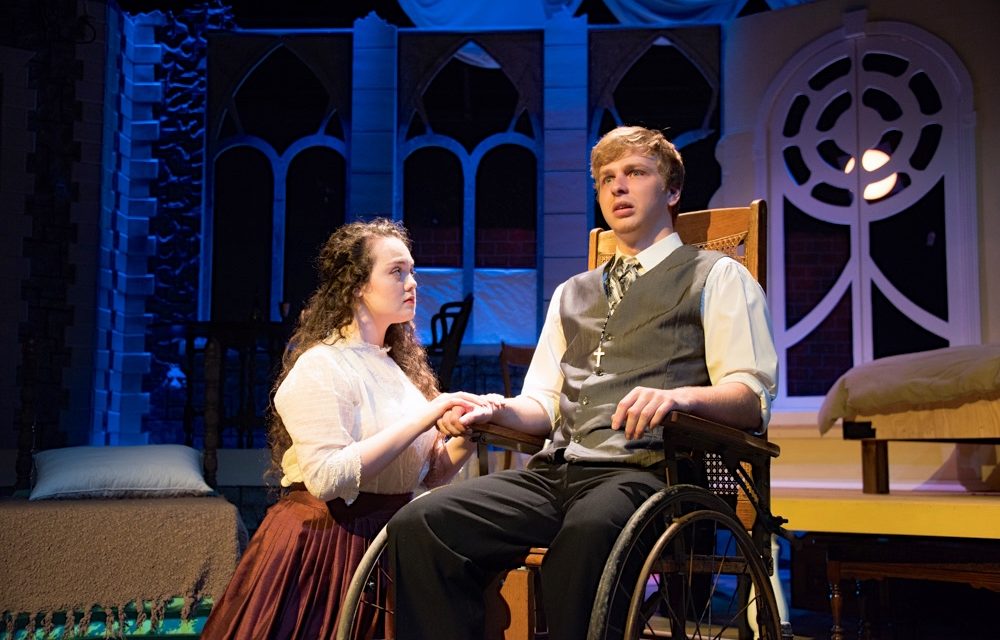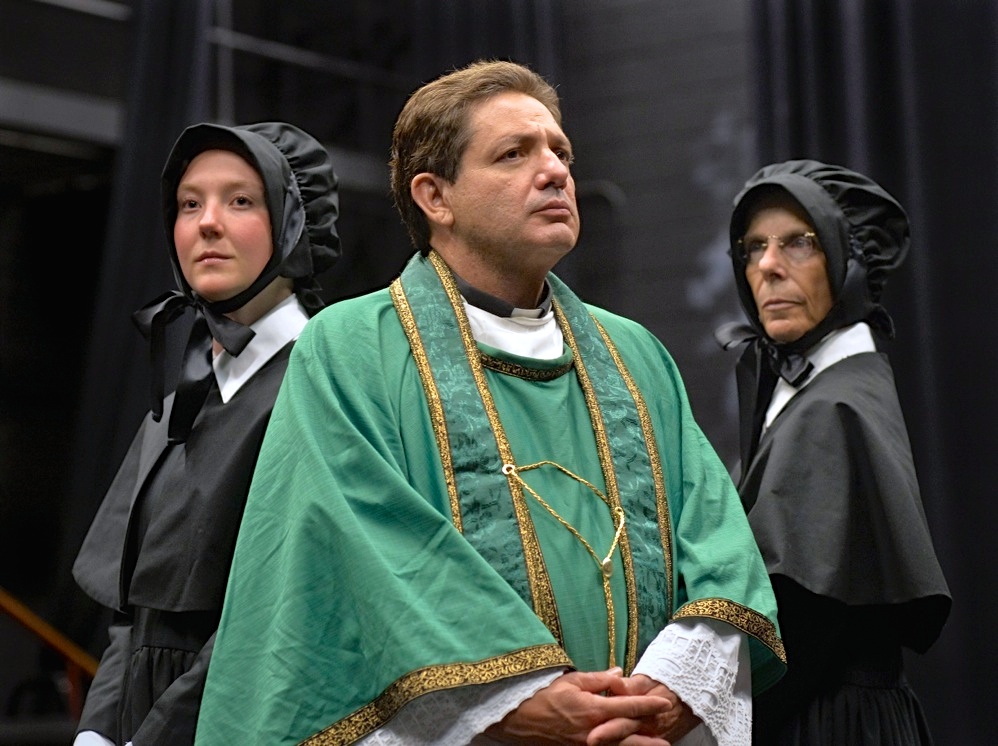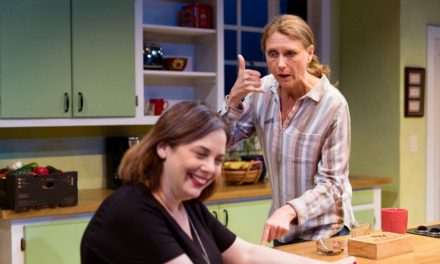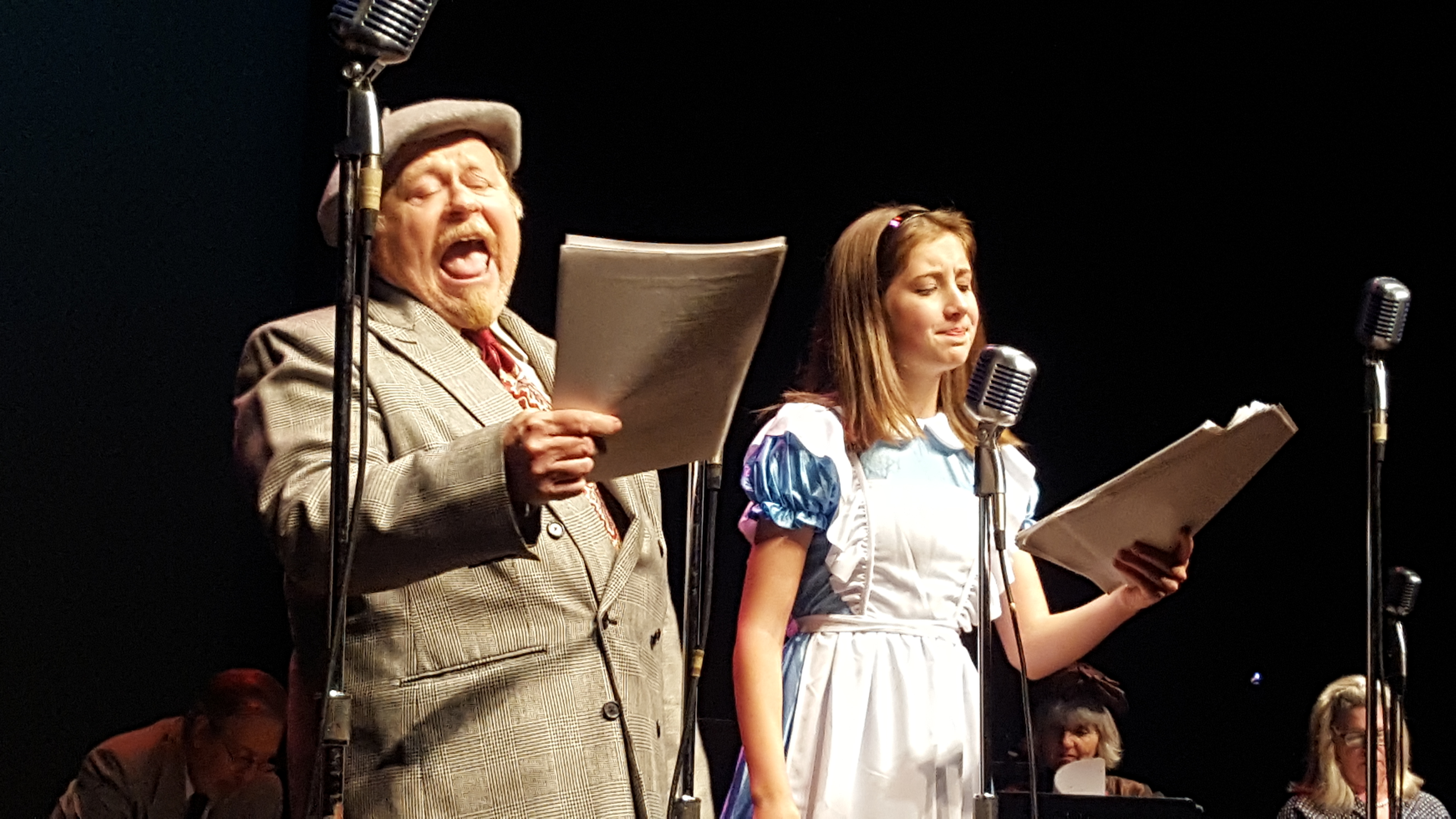(Above: Aimee Hamilton as Mina tries to ucomprehend the terror that her fiancé Jonathan, played by Kyle Letsom, has experienced in his dealings with the undeadly vampire in The Very Little Theatre’s production of Dracula.)
By Erica Towe
The Very Little Theatre’s production of Dracula, adapted by Steven Dietz and directed by Stanley Coleman, has everything a person could hope for in a Halloween show: monsters hide behind curtains, eyes glow in walls, crazy men are on the loose, pyrotechnics surprise the audience, and a stellar cast shares a sinister yet fun evening of gothic horror.
Most of us loosely know the story of Count Dracula — a hungry, vampiric monster who hunts and seduces innocent victims so he might bite their necks, drink their blood, sustain his own life, and find eternal companionship. If help is not soon found for those bitten victims, they too cross over into the land of the undead, condemned to a life of eternal restlessness and unsatisfied need.
While there are many stories and adaptations of Dracula, Dietz’s adaptation is closely aligned with Bram Stoker’s novel of the same name. Both focus on a group of women and men in London, England, in 1897, who have fallen under Dracula’s seductions. In the VLT production, as played by Joel Ibáñez, Dracula handily transforms from aged and desperate to youthful and powerful, once he is strengthened by feasting on fresh blood. Ibáñez’s Transylvanian accent adds to Dracula’s mystery without turning him into a caricature of the monster.
Like all good horror stories, this one starts with a glimpse of the innocent on an ordinary day. Close friends Mina (demure Aimee Hamilton) and Lucy (alluring Melanie Moser) talk giddily about love while the Maid (Demetra Kalams) attends to Lucy’s somewhat frivolous demands.
In what is otherwise a male-heavy ensemble, Mina’s and Lucy’s feminine charms captivate their male suitors — and Dracula — and also the audience at the VLT. The feminine mystique of the production is shiveringly enhanced by a haunting ensemble of ghostly Vixens (Livija Jacks, Natalie Tichenor, and Sarah Nesslin).
As Lucy and Mina contemplate the state of their love lives, Mina’s sensible and stable fiancé Jonathan Harker (Kyle Letsom) naively brokers a real estate deal that opens the way for Dracula to come to England. Soon after Dracula’s secretive arrival, Lucy comes down with a mysterious illness. It quickly becomes apparent that no scientific medical intervention will save her — she has been bitten by the undead and is at risk of crossing over into that eternal world of restlessness.
But, led by the apparent vampire expert Abraham Van Helsing (Adam Leonard), a team of vampire hunters is assembled. Along with Van Helsing, Dr. John Seward (Robert Williams), Harker, and Mina seek to save Lucy from imminent death and vanquish the evil threat that is Count Dracula.
One other character of note is Dr. Seward’s asylum patient, Renfield (Blake Beardsley), a man who seems appropriately at home in the asylum, as he spiders and flies and the occasional rat. Beardsley skillfully shifts between lucidity and insanity as he interacts with Seward and awaits his master, who we come to learn is none other than Count Dracula. Renfield is attended to by a group of smartly dressed Asylum Attendants (Steven Shipman, Thomas Weaver, Brett French), and his stints on stage are a constant reminder that a dark and evil threat is looming.
With all the dramatic possibilities for blood and gore that come with producing Dracula, director Stanley Coleman’s staging is excellent. He pushes the boundaries of slaughter and seduction, but the scenes are never over-played. The ensemble of actors capably balances the truth of the characters and the sensational flare of the climactic ending. This is, after all, a tale of horror and there is a monster on the loose that can only be overpowered by garlic, silver, crucifixes, holy scriptures, stakes, and finally, a discreet beheading or two.
The design of the show is cohesive. The set is grand and gothic, and the scenes move fluidly between location and time, thanks to Coleman’s staging and the effective scenic design by S.E. Aschwanden and lighting design by Richard Scheeland and Marc Shapiro. The costumes by Gail Rapp and team are impeccable. Hints of red smattered throughout the set and costumes add an especially seductive touch. The only opportunity missed was the sound design. At times it felt cinematic not theatrical, competed with the acting, or was missing where it could have been profound.
Although a story about vampires may seem like good old-fashioned monster fun, what makes the VLT’s Dracula so worth seeing is its undying message: In a time when fear and evil seem ubiquitous, through this cautionary tale we can be inspired by people like ourselves who face and overcome the very real fear and threat of evil monsters that seek to destroy goodness and love.
What we learn is that a handful of good people can overcome even the fiercest of foes. As Mina says about Van Helsing in Bram Stoker’s Dracula, “How good and thoughtful he is; the world seems full of good men — even if there are monsters in it.”








